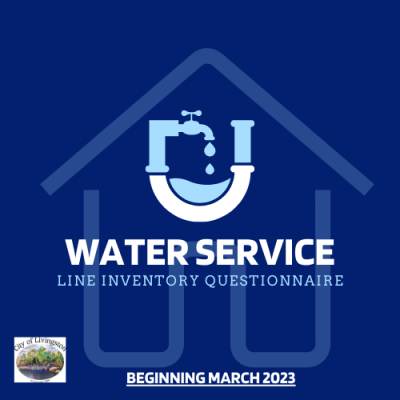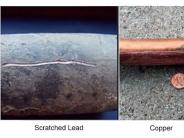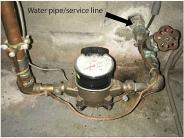The City of Livingston Public Works Department is working hard to ensure that all materials in the water system are known, inventoried, and up to modern standards. Although there is no lead in the water delivered to your home, particles of lead can enter your drinking water as it passes through lead service lines. While monitoring water quality is not new, we are asking city residents to help complete the questionnaire below, pursuant to the EPA's forthcoming Lead and Copper Rule Revisions, released in December 2020. These revisions require the City to inventory all locations of lead, non-lead, galvanized, and unknown water service lines within City limits before the NEW November 1, 2027, deadline.
When a tap is made to a water main, this is the point when a water service line is installed. The City also maintains records of every "re-tap" made to a water main; a re-tap is a replacement of a water service line at the same location or serving the same lot as the original tap. The City can verify that all new water service lines installed after 1970 and all water service lines replaced after 1980 are non-lead. Therefore, water service lines installed or replaced before these dates are of unknown material type and have the potential to be lead or galvanized.
We have mailed notices to all residents within our utility billing system, and have received a little over 2200 responses. Our next step will begin the week of June 23rd, with door-hanging survey reminders to residents whose mail was returned to the office, and those who have not responded to the mailed or online surveys. Those who received a letter and do not respond to the City's efforts will have their water service material types identified as "Unknown." The EPA requires that all services with "Unknown" material types receive a letter every year starting in 2025. This letter will include information about service line material, the health effects of lead, steps to minimize lead exposure in drinking water, and an opportunity to verify the material of the service line. More information can be obtained by reviewing the supporting documents at the bottom of the page, calling the City's Water Service Inventory Hotline at (406) 222-5667, or by emailing Public Works.
Text Instructions and Example (complete prior to responding to questionnaire below)
Tools Needed:
1. Flathead screwdriver, copper penny, or similar metal tool
2. Magnet
First, locate the water service line coming into the building. You will typically find it located in the basement, mechanical room, or in a wall panel. A water meter is installed on the water service line pipe after the point of entry into the building, see the example pictures below for additional information.
Identify test areas on both the inlet and outlet sides of the water meter. The inlet is the side coming into the dwelling from the street AND the outlet side, or the portion that leaves the water meter and goes into the dwelling. If the pipe is covered or wrapped, peel back the cover to expose a small area of the pipe, about 6 inches, to clearly see the color of the pipe.
Using the edge of a screwdriver, penny, or another similar tool, scratch or scrape through any corrosion that may have built up on the outside of the pipe so that the color of the pipe can clearly be seen. Then use the magnet and the color of the pipe to identify the material of the water service line from the following criteria:
- If the scratched area is shiny and silver-gray, your service line is lead. A strong magnet will not stick to a lead pipe.
- If the scratched area remains a dull silver-gray, and a strong magnet sticks to the surface, your service line is galvanized.
- If the scratched area is copper in color, like a penny, your service line is copper. A strong magnet will not stick to copper.
- The service pipe may be plastic and plastic pipes may vary in color. Plastic pipes are rigid, non-metallic, and may have information regarding the characteristics of the plastic printed on the side of the pipe.
Take a photo of the water meter showing both inlet and outlet sides of the water meter and service lines coming into the building and attach it to the bottom of this questionnaire
If, after completing the above and you are still uncertain about your water service line material. Please schedule an inspection with a representative from the Public Works Department at (406) 222-5667.



